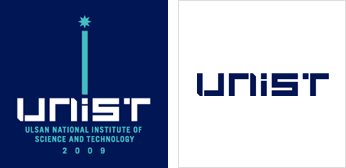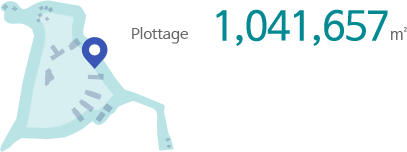-
Vision
World Leading University to Advance Science and Technology for the Prosperity of Humankind
Cultivating creative global leaders who will usher in new scientific paradigms through convergence in science and technology
-
Goal
To be ranked within the Top 10 science and technology universities by 2030

-
Strategies
-
Creativity
IT-based student-centered discussion classes (flipped learning)
-
Interdisciplinary
EducationAll students are required to complete two or more areas of concentration. All professors are appointed to undertake two or more schools.
-
Globalization
To promote globalization as well as our research and education, 100 percent of our academic courses are conducted in English. We also hope to increase the number of international students and professors by 20 percent by 2030.
-
Research
IntensiveThrust areas of current research: next-generation energy and advanced materials (bio-materials, energy materials, composite materials, carbon materials)
-
-
UNIST Footprint
-
- 2007.9
- Establishment
-
- 2009.3
- Opening
-
- 2015.9
- UNIST,
as a government funding research institute
-
-
President
Yonghoon Lee 2019.11.25. ~ Present -
About UI

-
blue
Leadership
The “Leading Star” represents a shining forerunner in science and technology that serves mankind and pioneers the future.
-
green
Reliability
The quadrate emblem frame is a representation of our aim to become a world-class university and the most trusted educational institute.
-
-
Academics
-
Undergraduate (3 College / 15 School / 2 Department)
- College(College of Engineering)
– Department of Mechanical Engineering
– Department of Urban and Environmental Engineering
– Department of Materials Science and Engineering
– School of Energy and Chemical Engineering
– Department of Nuclear Engineering - College(College of Information-Bio Convergence Engineering)
– Department of Design
– Department of Biomedical Engineering
– Department of Industrial Engineering
– Department of Biological Sciences
– Graduate School of Artificial Intelligence - College(College of Natural Sciences)
– Department of Physics
– Department of Mathematical Sciences
– Department of Chemistry - School of Departmnet
– School of Liberal Arts
– School of Business Administration
- College(College of Engineering)
-
UNIST Multidisciplinary Institute
- Division of Mechanical, Aerospace and Nuclear Engineering
- Division of Urban and Environment Engineering
- Division of Design and Human Engineering
- Division of Materials Science and Engineering
- Division of Energy and Chemical Engineering
- Division of Electrical and Computer Engineering
- Division of Life Science
- Division of Natural Science
- Division of Business Administration
-
-
Graduate
-
Professional Graduate Schools
-
Specialized Graduate Schools
-
-
Faculty
- Total Number: 446
- Average Age of Professors: 45.9
- Number of Foreign Professors: 11.8%
-
Staff
- Total Number: 858
-
Students
- – Undergraduate : 2,206
- – Graduate : 2,298
-
Scholarships
Average scholarship per student6,481,000KRW -
Intellectual Properties
Intellectual Properties 2014 2015 2016 2017 2018 2019 2020 2021 2022 2023 Number of applications filed (Domestic) 258 303 354 509 467 496 480 431 388 446 Number of applications filed (International) 66 74 76 129 150 124 189 201 245 146 Number of patents registered (Domestic) 127 146 201 247 268 388 376 312 204 254 Number of patents registered (International) 5 13 23 20 28 41 83 71 74 58 -
Research Grants per Faculty
Research grants: million won
Research Grants per Faculty 2014 2015 2016 2017 2018 2019 2020 2021 2022 2023 Research Grants 60,708 84,132 96,601 112,402 114,413 127,750 144,155 161,320 187,706 181,006 No. of Project 643 691 714 824 806 944 1008 1169 1165 1106 -
Faculty Publications
Faculty Publications 2014 2015 2016 2017 2018 2019 2020 2021 2022 2023 Journal Papers 768 981 1059 1196 1283 1349 1533 1552 1530 1433 SCI(E) Papers 687 887 961 1069 1182 1260 1425 1422 1412 1309 SCI(E)/Faculty 3.33 3.82 3.88 4.33 4.60 4.42 5.06 4.63 4.58 4.19 Evaluation based on scientific publishing:
FWCI (Field-Weighted Citation Impact)1.59(2018 ~ 2022) -
Academic Research Performance
- World’s Top 3 Universities in the Field of Secondary Battery (Along with MIT and Stanford)
- Nature Index (NI): Ranked No. 4 nationally (As of June 2018)
- Global Ph. D Fellowship (GPF): Ranked No. 1 nationally (No. of Graduate students ratio, as of 2014)
- Hosted three Institute for Basic Science (IBS) research centers (300 billion KRW for the next 10 years)
- Center for Soft and Living Matter (Director: Steve Granick)
- Center for Multidimensional Carbon Materials (Director: Rodney S. Ruoff)
- Center for Genomic Integrity (Director: Kyung Jae Myung)
-
UNIST Research Centers
-
Advanced Materials
-
Eco-friendly Energy
Research Support
-
Design and Human Engineering
-
Electrial and Computer Engineering
-
-
Campus

- 10 Education Facilities
- Natural Science Bldg., Engineering Bldg. 1, Engineering Bldg. 2, Engineering Bldg. 3, Engineering Bldg. 4, Engineering Bldg. 5, Buiness Administration Bldg., Main Administration Bldg., Library, Student Union Bldg.
- 6 Research Building
- Low Dimensional Carbon Meterials Bldg
- Advanced Material Research Bldg
- Stem Cell Research Bldg
- Machine Manufacturing Bldg
- Special tests Bldg
- Battery R&D Center
- 10 Education Facilities